HARLEY QUINN Season 1: An Endearing Character Study In A Crazy World
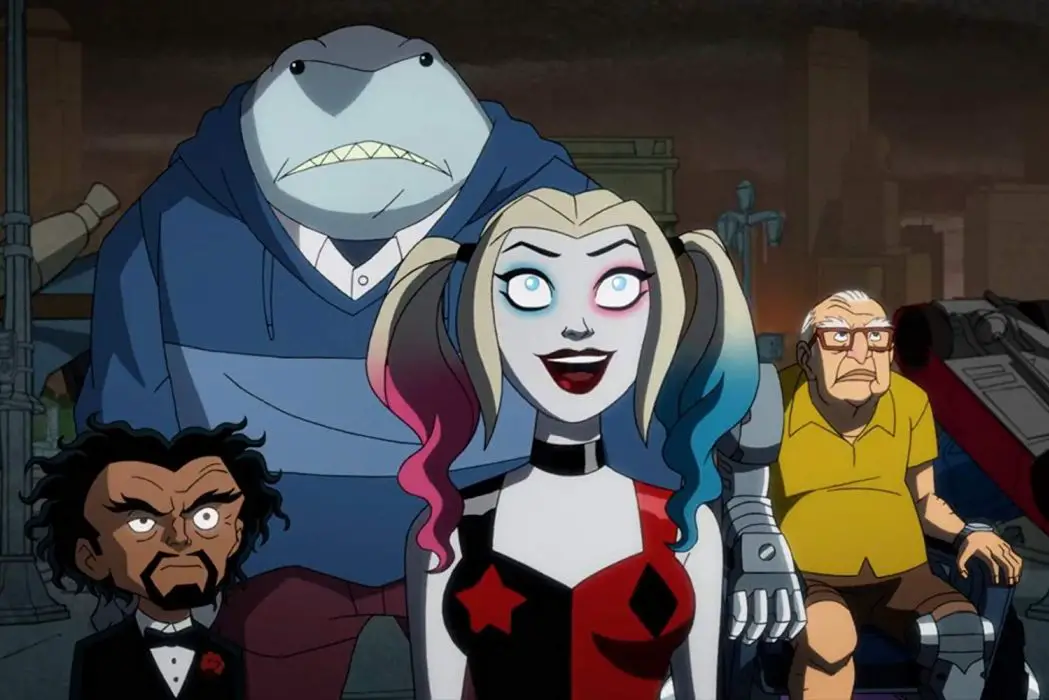
I'm a film journalist and independent filmmaker who fell in…
Created by Paul Dini and Bruce W. Timm for the episode “Joker’s Favor” in the classic Batman: The Animated Series (1992-1999), Harley Quinn went beyond the classic gangster moll (or hench-wench) and proved to be as popular as the Joker (to say the least). With dimension and heft complementing her charm and quirkiness, she tries so hard to be the candy-coated heart that lights up our cynical world. Despite her commendable attitude, she was still looked on as a delusional criminal who slept with a murderous psychopath.
In her definitive origin story The Batman Adventures: Mad Love (1994), Harley became a more empathetic figure, especially for those who suffered the wrongs of domestic abuse. She was a psychiatrist who became the Joker’s girlfriend, and would ultimately go solo or wisely associate with feminist icons (like Poison Ivy and the Birds of Prey) and Amanda Waller’s Suicide Squad.
After being incorporated into DC Comics canon in 1999, she began enjoying a successful stardom beyond her humble animated beginnings, which included an ongoing series and her cinematic debut. Not only did her legacy ensure that she’d become a celebrity in Gotham City and the rest of the DC Comics world, but that she would become a global rockstar in the 21st century.
Cathy Yan’s Birds of Prey (and the Fantabulous Emancipation of One Harley Quinn) was a breath of fresh air amidst the muddled choices of the DCEU franchise, and did much more to capture Harley’s heart and soul than did the underwhelming mess Suicide Squad (2016). On the small screen, we got the brilliant Harley Quinn (2019) series, which cemented the anti-heroine’s gravitas and iconography.
After Batman (Diedrich Bader) captured her during one of the Joker’s (Alan Tudyk) murderous sprees, Harley Quinn (Kaley Cuoco) was sent to Arkham Asylum. There she waited for her boyfriend to break her out (as he “promised) for a whole year, but no dice. Despite her ignorance, every Arkham inmate, especially her best friend, Poison Ivy (Lake Bell), try hard to hammer in the point that the Joker takes her for granted. After fearing the worst and escaping Arkham, Harley tries hard to reinvent herself and move up in the criminal hierarchy but struggles to shut the Joker out of her life indefinitely.
The Setting
Like Batman: The Animated Series, Harley Quinn maintains a gritty sensibility within a more abstract world. Characters can be immature and wacky, to be sure, but most of them are neurotic and encounter obstacles that you and I have faced (or will face) in our lives. At times, they can be pitiful creations searching for meaning and acceptance in a truly unforgiving world (and the DC Comics universe is a vast one).

Staying true to the notion that superhero comics are a reflection of our times, Harley Quinn finds itself perfectly at home in the world of the #MeToo movement, where the wrath of the media, political correctness and social justice are just as deadly as evil sorcerers and alien invasions. Gotham City is as much of a character as any of the individual personalities we encounter, and one that welcomes the carnivalesque, like the Arkham inmates who use their asylum as a revolving door. It’s a breeding ground for social media trolls and commentators, and being in the public eye can be both a blessing and a curse.
The scary notion of “the gods walk among us”, which was echoed in Zack Snyder’s baffling Superman films (2013/2016/2017), is treated with an air of nonchalance such that the superheroes and their archenemies, the Legion of Doom (LOD), are treated like A-list celebrities and Reality TV personalities (at the best of times they are Greek Tragedy and professional wrestling, and at their lowest they are Jersey Shore, Keeping up with the Kardashians and The Jerry Springer Show). Funnily enough, the LOD have their own public headquarters firmly planted in Gotham City (not in a murky swamp as in their origins in The Challenge of the Superfriends). True, the series embraces the absurd side of superhero comics, but one might often wonder as to whether Lex Luthor (Giancarlo Esposito) has secured diplomatic immunity for the entire organisation, for them not be arrested or imprisoned in the Phantom Zone for crimes against humanity.
It’s also rather amusing to see that the classic superheroes have been around since the 1980s, but don’t seem to have aged much, whereas other “imperfect” characters seem to succumb to old age and brittle bones far too easily.
The Characters
Over the course of the season’s thirteen episodes, Harley Quinn carefully paints an intricate portrait of the titular character’s fractured life, where a vicious cycle of disappointments are a product of her having been raised in an abusive, corrosive household. Psychiatry was her “safe space” so as to avoid direct engagement with her own “failures”, and the Joker soon took advantage of that. He became the potent drug that gave her the illusion of hope and validation. He seduced her into becoming his doormat, and her continued infatuation with her man became obsessive.
It doesn’t help that the Joker himself has his own fixations on the Batman. The strange love triangle has caused much friction between the three, but Batman doesn’t emote beyond displaying his anger towards the both of them not being locked up and rehabilitated. Some comics have painted him as repressed and ineffectual, and like Harley in this series, he is simply not trying to display any hint of vulnerability. Even his relationship with Commissioner James Gordon (Chris Meloni) is strained, because the once respected officer is now a miserable alcoholic who is paranoid about his marital situation and simply wants a friend to talk to.
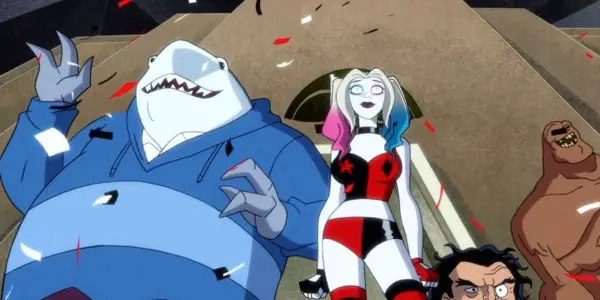
The first episode of the series brilliantly gives Harley the growth she needs, but also sets up the pungent atmosphere of self-sabotage that is to come. Harley has a lot of attitude and isn’t a pushover, but rather someone who constantly questions her place in criminal society. The Joker constantly holds her back, preferring her to be the “straight man” in their double act, but never as an equal. For Harley, improving her status and being a recognised member of the LOD is the key to her self-worth, solely because the manipulative Joker considers them to be extremely significant.
Unlike Harley, Poison Ivy (formerly Pamela Isley) is more guarded and reserved with people. She isn’t a villain out for pure evil, but tries to use her powers to avenge and protect Mother Nature. She is principled, tough and a staunch feminist, so much so that she berates Harley for being so hung up on her LOD membership, being a heinous, misogynistic boy’s club (although they do make room to include Cheetah, whose Luthor forgets).
Like Harley, however, she has trust issues and privately wants a shoulder to lean on. She is overly protective of her image and iconic stature, which initially makes her reluctant to date the likeable but misguided low-tier villain, Kite-Man (Matt Oberg). She despises the fact that she has to be a victim (or at least, a second-class citizen) in a man’s world, and constantly tries to push the more optimistic Harley into armouring herself.
Harley also feels that a gang would give her more credibility, so she fashions herself one out of criminal society’s least-regarded figures. The troupe includes the fanatic misogynist, Doctor Psycho (Tony Hale), a seedy, loud-mouthed telepath who was famously banned from the LOD for publicly calling Wonder Woman the “c-word” (he doesn’t conform to their brand of evil); King Shark (Ron Funches), an insecure, tech-savvy humanoid shark, who wants to be liked and uses his skills to make criminals popular (though he becomes violent when he smells blood or hears “fish slurs”); Sy Borgman (Jason Alexander), a retired, shady government agent who became a cyborg; and Basil Karlo aka Clayface (Alan Tudyk), a jubilant, shapeshifting mass of clay, who incorporates his love of acting into his crimes.
Even for supporting characters outside of Harley’s crew, like the rather single-minded Bane (James Adomian) or the narcissistic Maxie Zeus (Will Sasso), the animation and writing gives them enough personality and texture to give us the impression that everyone has a life in this city, even if they don’t factor into any particular plot. Like the minor/supporting characters in the films of the Coen Brothers, they are never disposable or forgotten, instead teasing a story waiting to be explored. By comparison, however, Harley and her friends seem like regular people.
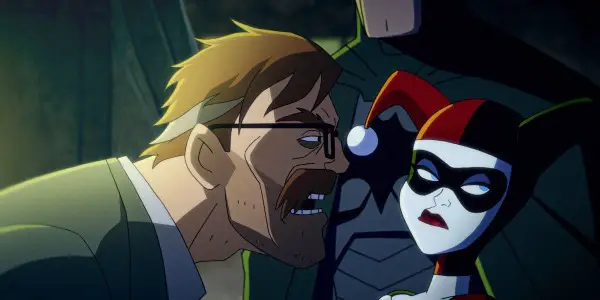
A testament to the writers, each member of the Harley gang has their moment in the spotlight, and their aspirations, fears and personal baggage are all recognised. Even with her dreams crushed early in her life, Harley never stopped dreaming or hoping for something better, which is brilliantly reflected in her crew. Just as we’ve seen in James Gunn’s Guardians of the Galaxy (2014), this is a surrogate family of outcasts who try to find common ground and believe in an ideal, but some may be more self-involved than others and take their group for granted. And that, is where the real drama can be found.
Style
As demonstrated in the brilliant Justice League Unlimited (2004-2006) and the ever-growing Marvel Cinematic Universe, the series understands what is both fun and intellectual about superhero comics, and relishes the opportunity to explore a great many concepts and ideas, as it plays in the DC Comics sandbox. It’s obvious that the creators and writing staff are either fans or have some appreciation for the source material, as they pluck more obscure (or less mainstream) characters from the comics and give them a sense of purpose in the series. There is a lot of joy to see various comics storylines referenced like the No Mans Land series from the Batman stories, Alan Moore’s run on Swamp Thing, or even throwing in casual references to Jack Kirby’s New Gods without having to stop and explain the mythology to the random punter.
While we do get the odd heist or crime every now and then, nearly every episode experiments with genres, with each one feeling like an unique journey and flavour, and never contrived. The fifth episode, Being Harley Quinn, literally infiltrates the infrastructure of Harley’s mind, referencing Being John Malkovich and Dreamscape, and ultimately investigating Harley’s sense of denial and repressive nature. The seventh episode, The Line, deals with the witch known as the Queen of Fables (Wanda Sykes) being freed from the confines of the U.S. Master Tax Guide Book and unleashing her own brand of destruction. Not only does the episode parody the superhero origin story, but it also establishes Harley’s moral compass and the line she dares not cross.
The design of the show’s characters refer to various comic book art styles that span decades, including Amanda Connor and George Perez, but also look for inspiration in other mediums such as the Injustice video games or Christopher Nolan’s The Dark Knight trilogy. The series makes use of eclectic but strikingly beautiful colour palettes (like sepia and magenta), that suit the art-deco atmosphere, with occasional nods to Film Noir, German Expressionism, and surrealism.
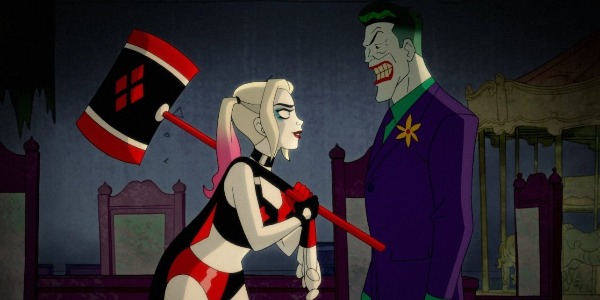
The series makes proper use of the medium of animation. In a high-speed chase above the city’s structures, the intensity and pacing are ramped up to the nth degree (unlike anything we’d seen before in the series) and unlike any of the entries from the Fast & Furious franchise, we still care about every one of our heroes involved in the high-stakes battle. In a more insightful scene early on in the series, Harley has a heart-to-heart conversation with her psychiatrist-self in a framed photo, and we shift between the two perspectives (we are in the photo looking at current Harley like we would a movie on a giant screen). Not only is it cinematic, but it demonstrates precisely what can only be done in animation (and comics).
In terms of its humour, Harley Quinn follows in the footsteps of Archer, Family Guy, Rick and Morty and South Park, with a mix of absurdist sensibilities, dark comedy, snappy dialogue, and violent slapstick. The series also makes use of satirical commentary, not just on the manic materialistic, media-driven world we live in, but with regards to the history of gender politics and male gaze in comics. While the humour isn’t always on point, and there are times where it appears that the writers are borrowing the wrong page from Family Guy’s book (and some people may object to Sy Borgman’s Jewish stereotype, which is otherwise handled with affection), there is a great energy in the atmosphere and dialogue, and the banter exhibits the strong character dynamics.
Themes
The refreshing thing about the first season of Harley Quinn is that, even if it doesn’t necessarily match the ambitious scope of something like Rick and Morty, it is evident that it isn’t trying to be mean-spirited or ultra-nihilistic. Sure, there could be an overwhelming display of bloodshed and violence (and it is often hard to keep track of the rising death toll), but Harley’s crew aren’t looking to slaughter or torture innocents. These characters are, undeniably, on the wrong side of the law, and they know it, but like their “leader”, they are seeking attention, and want to be acknowledged, listened to and recognised.
Like Rick and Morty, the series rather boldly gives us precious moments of serious drama, and the transitions are surprisingly organic, especially when followed by an overload of mayhem. The scenes are fundamental to the main storyline, not just because they make the characters relatable, but because they hit a key note: It is perfectly fine to display emotion and moments of vulnerability.
When Harley’s boyfriend had his own (possible) “origin story” film with Todd Phillips’s Joker (2019), it divided people with its questionable portrayal and treatment of mental health. In Harley Quinn, it is handled in a much more universal manner, with many characters suffering from betrayal, childhood trauma and unresolved emotions, that have taken a toll on their psyche for the years to come. Kite-Man puts on a macho exterior and exudes hyper-sexuality to overcompensate for his own fear of failure and low status in society.
While we may pity certain characters, the series knows when to give them their moment of catharsis. Even Doctor Psycho may get a tear out of us in his moments of struggle. Bad or good, Harley Quinn understands the plight of mental turmoil, and strives to get us to remember the old adage, “This too shall pass”. For all the baggage and struggles that came with #MeToo, it had a moment of victory on February 24, 2020. It proved that monsters can be caught and locked away.
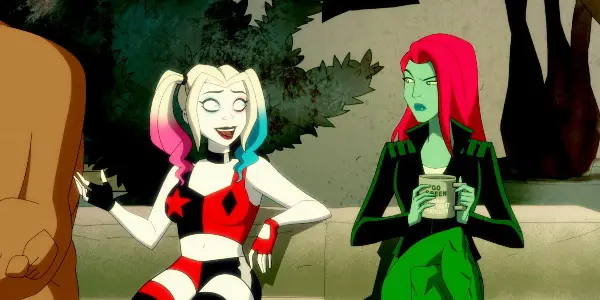
Harley Quinn can be explicit about its subject matter, but even in the realms of its comic-book world, it does so in an awfully personal manner. It despises the rankings and status that define man-made society, and it does not take kindly to lack of diversity and inclusion where only the elite and those considered to be “perfect’ are given top priority. If Harley represents Woke Culture, then the Joker is its polar opposite. He is the cyberbully who chooses to stalk its prey until they are driven to self-harm, whether they were guilty of anything or not.
Harley and her new family bring a sense of urgency to their stories. To reject those who use and abuse an innocent (or the relatively innocent), and restore a sense of equality and order to the world. To fight fear, learn self-acceptance and take responsibility for our actions.
That is their plight.
The Voices
The bar was set rather high when legendary casting director Andrea Romano helped bring together one of the most memorable ensembles when Batman: The Animated Series aired. Not that it truly matters, as the actors of Harley Quinn manage to leave an indelible mark on their characters.
Kaley Cuoco is nuanced and quirky as Harley, and makes clear distinctions between her highs and lows, showcasing great sensitivity. For that, she joins the ranks of Arleen Sorkin and Tara Strong as the great Harley Quinn performers. Lake Bell and Deidrich Bader (reprising his role from Batman: The Brave and the Bold) play Ivy and Batman like the badasses they portray themselves to be, with an added dose of sarcasm and brutal honesty.
As the Joker, Alan Tudyk doesn’t necessarily bring anything new to the table like Mark Hamill or John DiMaggio, but he still puts his stamp on the character with his impenetrable mania. However, as Clayface, he almost always manages to steal the show, with his infectious, inspiring attitude in the face of danger, and his beautifully campy theatricality.
With too many to mention, the supporting and recurring cast members give the series a great deal of character and personality, and they include the memorable J.B. Smoove as Frank the Plant (who enjoys marijuana) and Rahul Kohli playing a Nolan-inspired iteration of the master of fear, the Scarecrow.
Harley Quinn Season 1: Conclusion
Over the years, numerous artists and writers have worked hard to prove that superhero comic books need not be juvenile nor insubstantial, but rather a medium where adult desires, fears, ideas and themes can be explored. Suffice it to say, their efforts are honoured in this animated series. Harley Quinn is both entertaining, insightful and inspiring, and opens doors to great possibilities for DC Comics animation.
Harley Quinn was released on the DC Universe Network on November 29th, 2019.
Does content like this matter to you?
Become a Member and support film journalism. Unlock access to all of Film Inquiry`s great articles. Join a community of like-minded readers who are passionate about cinema - get access to our private members Network, give back to independent filmmakers, and more.
I'm a film journalist and independent filmmaker who fell in love with cinema at a young age. I also love writing about comics, literature, podcasts, television and video games. I'm just as content watching a movie about a giant killer pig terrorising the Australian outback as I am with one that features a catholic priest in crisis.













